Insurance email marketing is a powerful and versatile tool for insurance agencies. It offers a direct line to decision-makers that you can use to build relationships, nurture leads, and engage your contact list. Insurance email marketing also opens the door to greater personalization when you collect and understand prospect data.
Table of Contents
In this article, we’ll share the strategies for using email to succeed in the insurance sector.
Email Marketing for Insurance Agents: 5 Key Strategies
Email marketing is full of potential for insurance companies. Here are five proven ways to optimize your outreach and maximize insurance email marketing ROI.
1. Understanding the Basics of Effective Email Campaigns
Effective email campaigns deeply understand their target audience and deliver relevant, engaging content that people want to read. The best way to achieve these goals is by segmenting your email list based on customer profiles, demographics, and insurance needs.
When you split your audience along these lines, your communication becomes more engaging and resonant, resulting in increased conversion rates.
Relevance is key here. Email is easy to scale and automate. As a result, recipients are too often overwhelmed by online correspondence that feels impersonal and generic. Your emails can stand out from the crowd by:
- Addressing recipients by name
- Referencing previous interactions or insurance queries
- Offering tailored insurance solutions based on what data you have about your prospects or existing customers
Finally, dynamic content blocks offer a way to automate your outreach while maintaining a level of personalization that feels unique and valuable.
2. Designing Emails for Maximum Engagement
As far as return on investment (ROI), email remains one of the most effective marketing channels. It’s also incredibly cost-effective — which is both a strength and a weakness because the lower barrier to entry means you must compete with a lot of firms for audience attention. Cutting through the noise requires a carefully considered approach.
If you want your list to engage with your emails, you need great design:
- Use visuals, such as high-quality photos or infographics, to break up the text and give your emails energy.
- Fonts, clean layouts, and lots of white space make emails easy to read.
- Use simple, jargon-free language in your emails.
- Calls to action should be persuasive and provide clear next steps.
In addition, you should prioritize and test responsive design across a wide range of devices. Your audience will read your email on smartphones, tablets, and desktops, so a consistent and pleasant user experience is vital.
3. Boosting Open Rates & Conversions
Open rates and conversions are the metrics that matter. These benchmarks should be at the forefront of your mind when formulating optimal insurance email marketing strategies. If you want your emails to connect with your audience, you must focus on two things: subject lines and CTAs.
Email subject lines have a powerful influence on open rates. Get them right, and you can grab your audience’s attention and compel them to read your email. However, just like news site headlines, there is a fine balance between engagement and clickbait.
There are several ways to drive open rates with strong subject lines. Some techniques that work include:
- Personalized emails that reference your prospect’s name and interests
- Deals or discounts available for a limited time to create a sense of urgency
- Questions or statements that provoke curiosity
- Tangible benefits backed by quantifiable stats
Once you have optimized your subject lines, it’s time to shift your focus toward a compelling call to action (CTA). Here are some best practices to drive conversion rates.
Placement
- Use multiple calls to action in your email.
- Ensure one call to action is placed “above the fold.” In other words, make sure your CTA is visible without scrolling.
- Research suggests that red-colored CTA buttons outperform text.
Wording
- Action-oriented verbs offer crystal-clear instructions. For example, “Get a Quote” or “Call Now.”
- Establish the benefit of clicking the CTA, such as “Click here for low-cost car insurance.”
- Ensure your reader knows what to expect when they click your CTA.
4. Using Advanced Insurance Email Marketing Tactics
Now that you have the fundamentals of insurance email marketing down, it’s time to explore some more advanced tactics. First, let’s take a look at email automation and drip campaigns.
Emails are the perfect medium for automated workflows. Thanks to email automation software, you can write emails and schedule them to arrive at particular intervals. However, you can make your outreach more dynamic when you trigger emails based on policy expiry or new leads. This approach frees up your agent’s time and ensures no missed opportunities.
Further to this, you can employ drip campaigns with a sequence of emails that nurture your buyer toward getting a quote or making a purchase.
Behavioral targeting and re-engagement campaigns are other solid techniques. You can use customer behavior like website visits or content downloads to tailor emails toward user intent and interest. This approach can do wonders for the relevance of your communication.
Additionally, you can use insurance email marketing to reach out to members of your list who have never converted or haven’t used your services for some time. The trick here is to offer rewards or incentives to dormant audience members in the hope that they will re-engage with your brand.
5. Measuring for Success
Finally, one of the less appreciated elements of insurance email marketing is its amenability to precise measurement. Here are some of the KPIs to measure so you can optimize your campaigns for maximum conversion.
- Open rates: The percentage of your audience that opens your emails
- Click-through rates: The percentage of recipients who read your email and click the CTA
- Conversion rate: The percentage of your audience who click a link and perform a desired action, such as requesting an insurance quote.
Always monitor each metric. Measure against industry benchmarks and, if the numbers are below par, make necessary changes. For example, low open rates suggest issues with your subject lines. Similarly, if your conversion rates are poor, it could be due to an underperforming landing page.
Finally, use A/B testing on your subject lines, email body, and landing pages. Test which elements perform best with your audience, analyze the results, and use the winning version.
Future Trends in Email Marketing for Insurance Agents
Insurance email marketing is not going anywhere. In the near future, artificial intelligence and data analytics will continue to increase personalization and relevance, allowing you to foster deeper connections with your audience.
While the space is hyper-competitive, staying ahead of the crowd involves following the five strategies we’ve listed above, experimenting with new techniques, and keeping abreast of the deliverability best practices that will keep you out of user spam folders.
Neilson Marketing specializes in helping insurance companies connect with their audiences via email marketing. Our team of experts is on top of the trends and technologies that influence email ROI. Reach out today for a conversation about how we can transform your email marketing approach and enable you to take your revenues to the next level.
FAQ
What is insurance email marketing?
Insurance email marketing involves using email campaigns to communicate with potential and existing clients, build relationships, nurture leads, and promote insurance products and services.
Why is email marketing important for insurance agencies?
Email marketing is essential because it provides a direct line of communication to decision-makers, allows for personalized messaging, and provides a cost-effective way to engage and convert prospects.
How can I make my insurance email campaigns more effective?
To make your email campaigns more effective, segment your audience based on customer profiles and insurance needs, personalize your messages, use engaging visuals, and create compelling subject lines and CTAs.
What are the key elements of a successful email marketing strategy?
A successful email marketing strategy includes understanding your audience, designing visually appealing emails, optimizing subject lines and CTAs, using advanced tactics like automation and drip campaigns, and measuring key performance indicators (KPIs) to refine your approach.
How can I increase the open rates of my emails?
Increase open rates by crafting personalized subject lines that grab attention, using language that creates urgency or curiosity, and ensuring your emails offer tangible benefits to the recipient.
What are drip campaigns, and how do they work?
Drip campaigns are a series of pre-written emails sent to prospects over time, guiding them toward a desired action, such as purchasing insurance. These campaigns help keep your audience engaged and move them through the buyer’s journey.
How can I re-engage inactive subscribers on my email list?
To re-engage inactive subscribers, send targeted emails offering incentives, such as discounts or exclusive offers, especially when their policy renewal time is approaching. Personalize your messages and remind them of the value your services provide.
